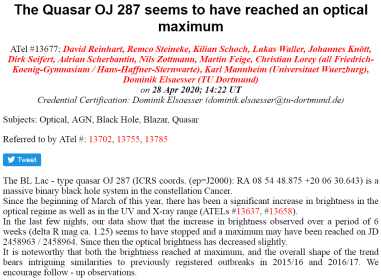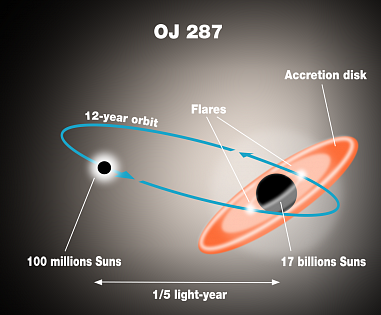Die Helligkeit des Blazar OJ 287 wird seit Beginn des Forschungsprojekts „AGN-Monitoring“ regelmäßig von uns bestimmt. Ab Ende März 2020 konnten wir eine Zunahme der Helligkeit dieses Objekts feststellen, die am 26. April 2020 ihren Höhepunkt erreichte. In diesen knapp sechs Wochen nahm die Helligkeit dieses Aktiven Galaxienkerns (AGN) um 1,25 Größenklassen zu, um danach wieder zu sinken.
Diese Entdeckung wurde in einer Ad-hoc-Mitteilung im Astronomer's Telegram weltweit veröffentlicht. The Astronomer's Telegram ist eine Internetplattform, auf der bedeutende astronomische Ereignisse schnell weltweit verbreitet werden, so dass sie dokumentiert sind und rund um die Welt überprüft werden können. Die Messung und Auswertung der Schüler deckte sich mit den Beobachtungen anderer Arbeitsgruppen sehr gut.
Die Überwachung der AGN an der Hans-Haffner-Sternwarte erfolgt in Abstimmung mit der MAGIC-Kollaboration, die ein Teleskopsystem für Gammastrahlung auf der Kanareninsel La Palma betreibt. Leider konnten dort auf Grund des Corona-shut-down keine Parallelmessungen durchgeführt werden.




